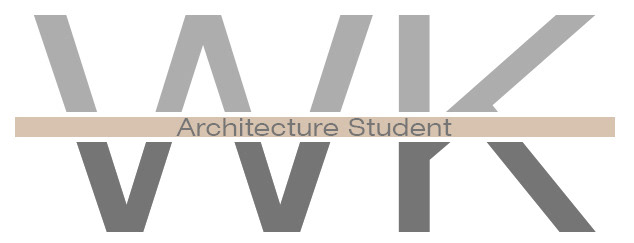In collaboration with: Anatalia lopez, Andrew Quinn, Diana Anda, & Grace Rykard
Governors Island encapsulates a single motive: to be a center for climate solutions. Governors Island will be devoted to the research, education, and development of sustainable ideas. The Island will also act as a hub of climate activity that will benefit its users and inspire their desire to eliminate climate change. A variety of natural concepts inspire the design of the island’s character, public realm, context, biodiversity, and infrastructure. Where the future meets the past, Governors Island provides a unique landscape in a prominent location within New York City. Previously used as a place of destruction, Governors Island seeks to become a place for solutions. The users will experience a sustainable utopia through living breakwaters, zero energy infrastructure, biophilic design, micro-climate exploration, and adaptation of existing buildings. Living Breakwaters will provide protection from natural events, restore oyster presence, and encourage biodiversity within the harbor. Zero Energy Infrastructure will be inspired by the Climate School’s research in transportation and energy solutions. Wind Farms and Tidal Lagoons will harness natural energy upon the island. Adaptations of existing buildings will provide interest and a unique experience to visitors by connecting them back to the history of Governors Island. By providing creative centers for interdisciplinary research and academic programs, Governors Island will advance actionable solutions for cities, prioritize equity and climate justice, engage adaptation of urban environments, and promote climate action throughout the world. The Island will create a new method of development and adaptive reuse that promotes sustainability, resiliency, and leadership.
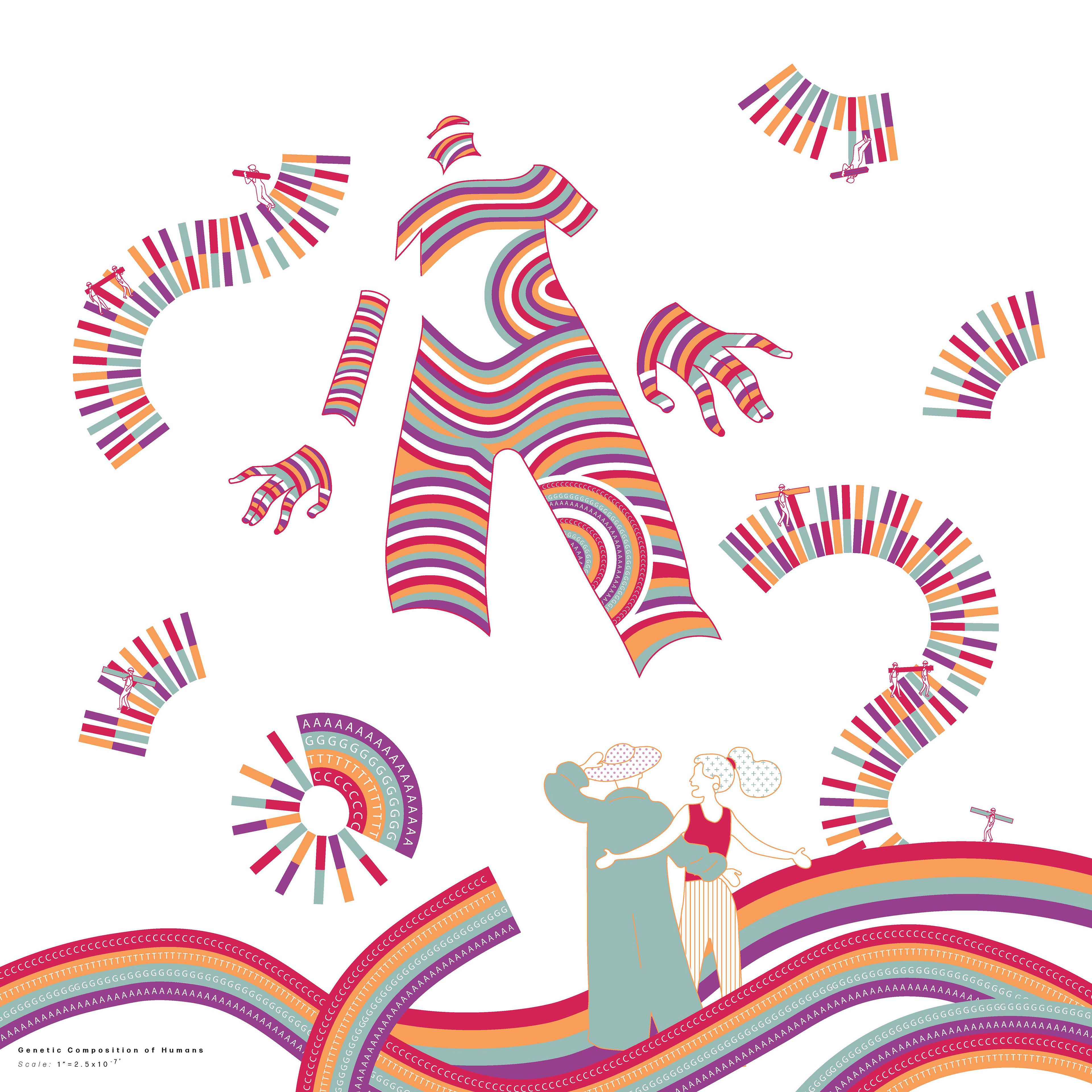
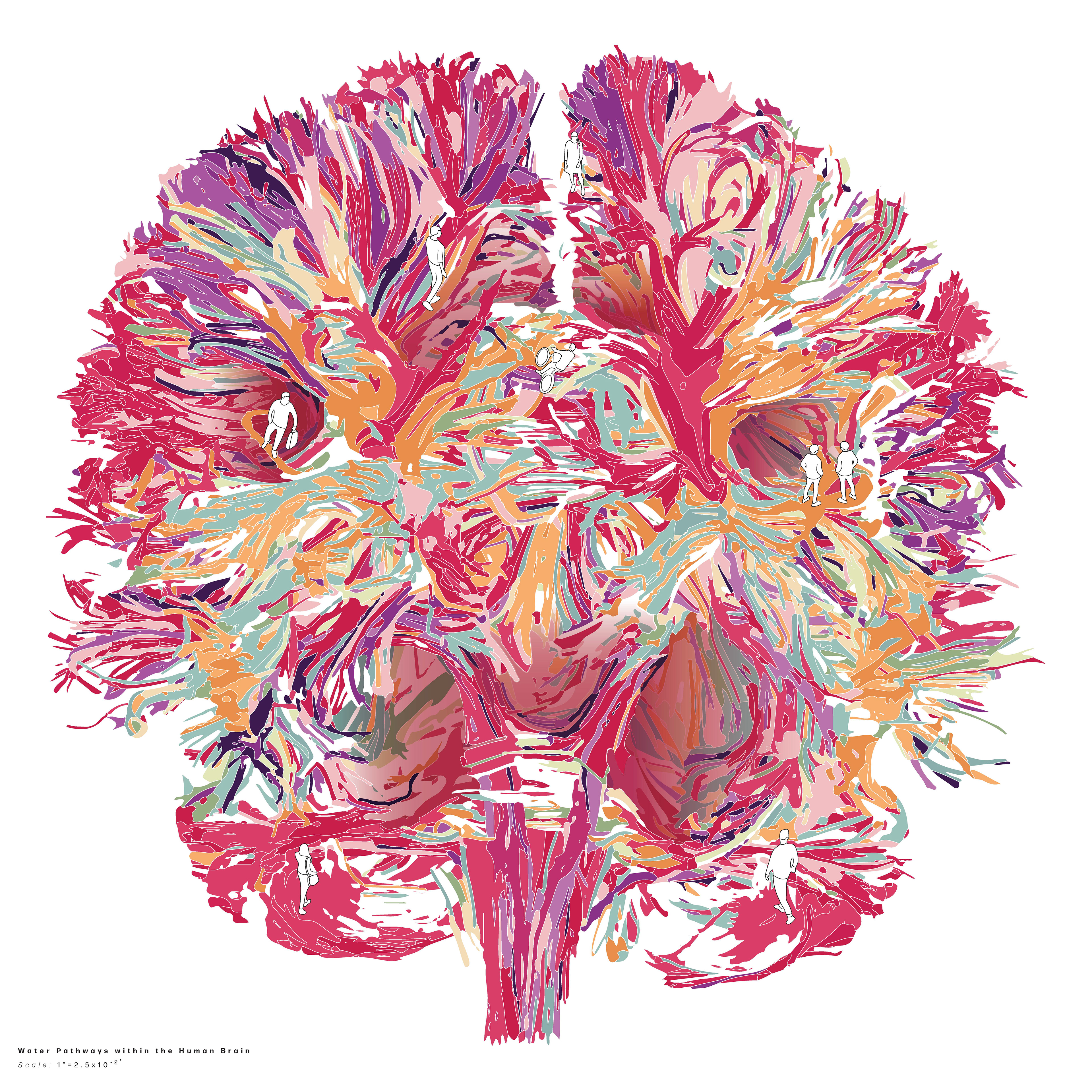

A Sense of the Human:
A human’s genetic makeup, diffusion tensor brain pathways and personal interactions inspired a series of experiential walkways throughout Governors Island’s landmarks. Studies of different scales revealed all humans have a unique genetic profile and a different purpose in the world, however our genomes are greater than 99% the same. The bases found in DNA molecules: adenine (A), cytosine (C), guanine (G) and thymine (T) carry the instructions to make a human one of a kind inspiring the importance of individuality for Governors Island. Large cabling within the brain act as interstate highways for information resembling people traveling from each borough to the island. Traveling to the island will give visitors a break from the hustle and bustle of New York City and an opportunity to learn about climate change solutions.

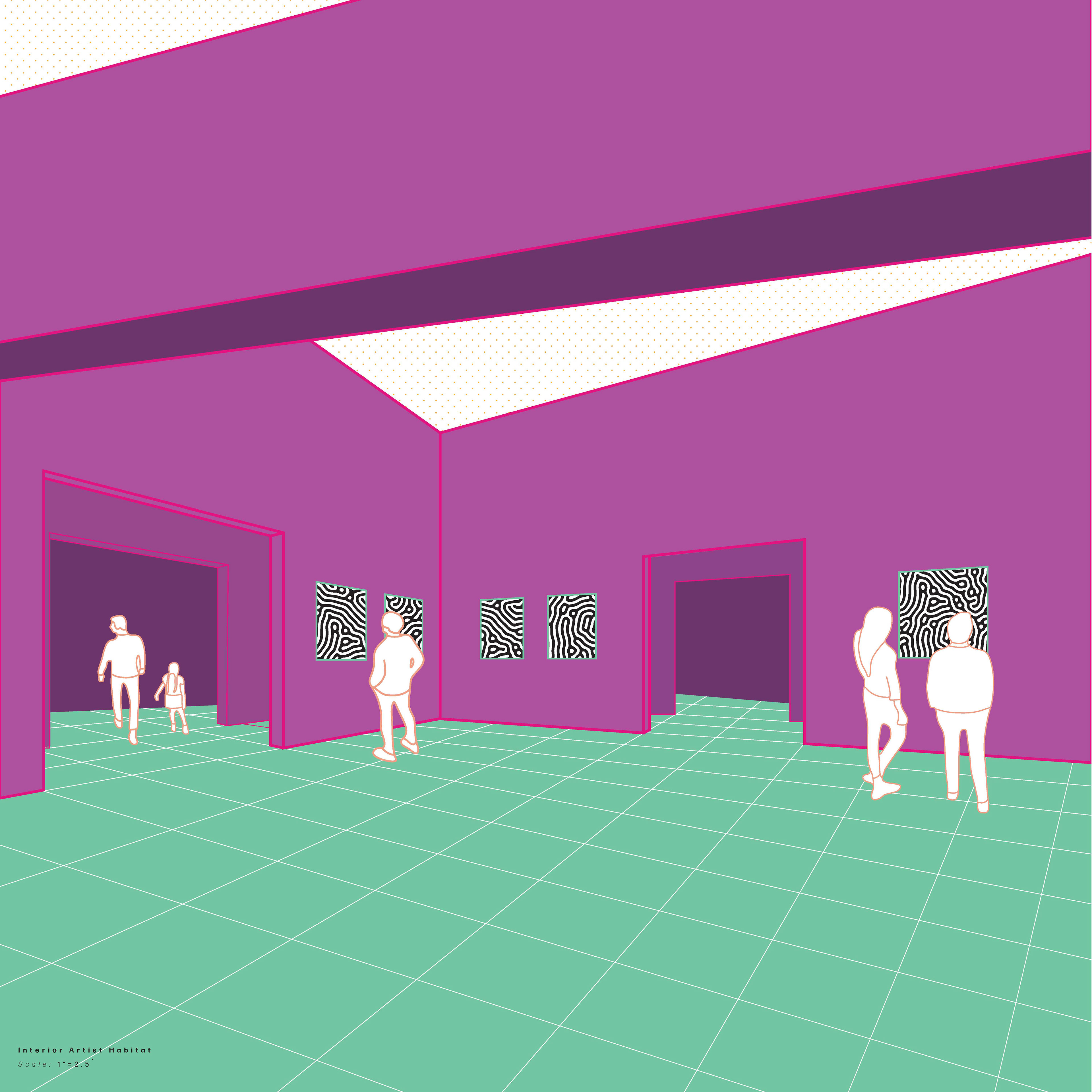


Columbia University Climate School seeks to provide open facilities for researchers, professors, students, and the public. The Climate School is Divided into four transdisciplinary initiatives: coastal resilience, decarbonization, disaster resilience, and food for humanity. Each Discipline has its own facility to provide each user with methods to research and promote climate change. Coastal resilience initiative will provide users with an open water research facility to predict and adapt to sea-level change. Decarbonization initiative and facility will seek methods and policies for reducing emissions and removing atmospheric carbon. Disaster resilience initiative and facility seeks to forge natural disaster prediction, prevention, preparedness, response, and resilience. Food for humanity initiative will provide a research garden to analyze and promote sustainable food systems.


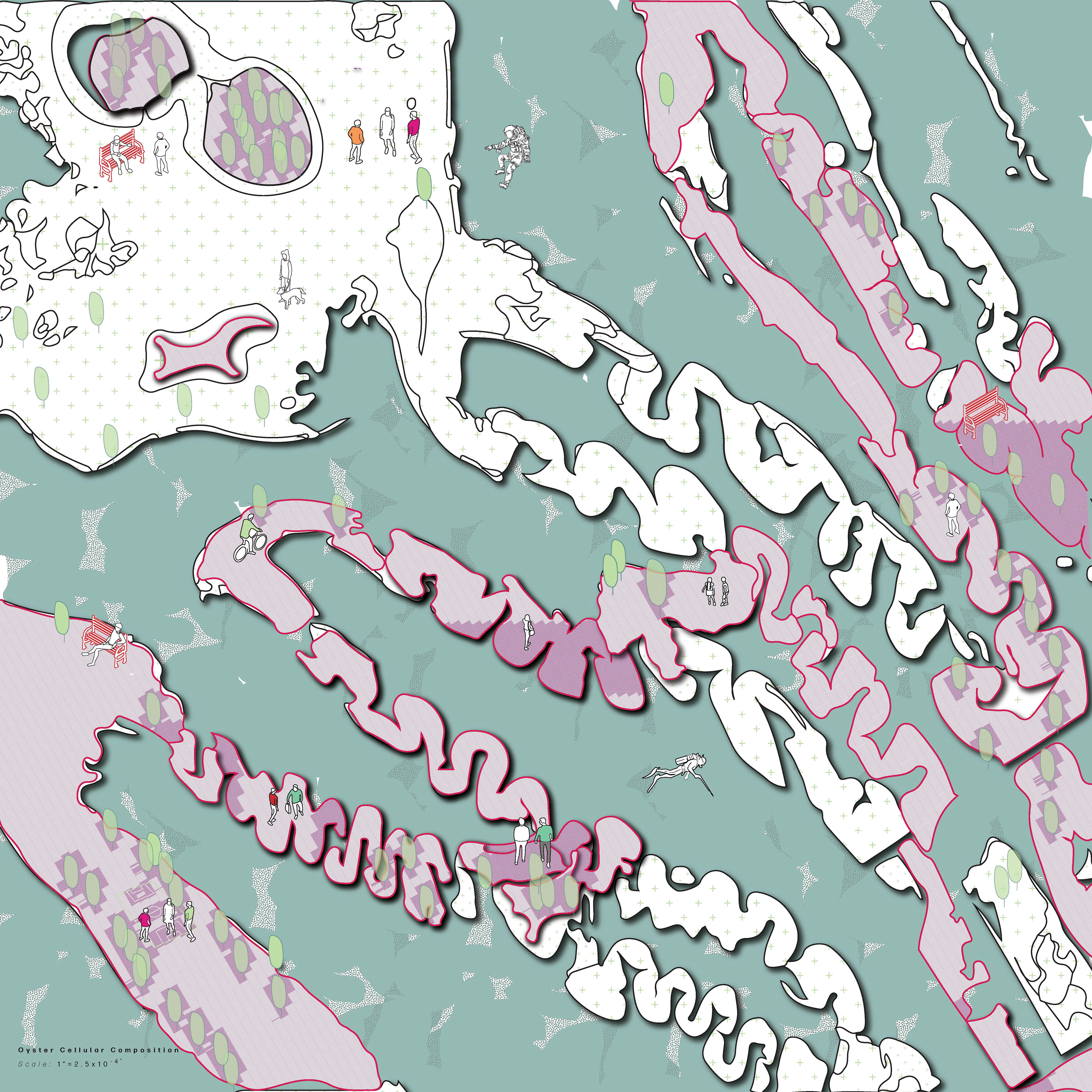
Beyond the Shore:
Oyster cells, reefs and living breakwaters inspired research beyond the island’s shoreline. New York Harbor formally known as “The Big Oyster” was once rich with marine diversity. By pairing with Billion Oyster Project we plan to create a hub to promote research and training to further enhance their efforts to rehabilitate the oyster population along the harbor. When repopulated, oysters will begin to filter the murky river water. Living breakwaters are one solution to rehabilitating the oyster population. Oysters form into a mass stronger than concrete and will be used to build a breakwater in order to harness energy and attenuate strong Hudson River currents.
To New Beginnings:
At the intersection of human ecology and marine biodiversity, Columbia University’s Climate School on Governors Island researches coastal resilience, decarbonization, disaster resilience and sustainable food systems. Each initiative has its own building to combat climate change as well as energy generating components for the island such as tidal lagoons. The extensive walking paths lead you to and from the new and historic parts of the island. The island’s historical Colonel’s Row has now adapted to be experiential artist habitats. The paths around the island turn into gallery walls and allow visitors to directly interact with the history of the island. Another landmark, Castle Williams, once used for coastal fortification is now used as an aviary containing plants and animals to simulate a rehabilitating natural environment.
Above and Below:
As a center for climate solutions, Governors Island encapsulates the interaction between human and oyster ecologies. The super drawing shows the interaction of each transposed upon the human brain. Imitating the genetic makeup of humans and oysters, the representation of the brain recognizes the pathways designed to connect people to landmarks around the island. The site plan lies at the cut of the brain to separate the land and water elements. Serving as a sustainable utopia, Governors Island will turn a place used for destruction into a place for solutions.
Governors Island’s master plan and design was inspired by the dichotomy of human and oyster ecology. The opposition of Humans and Oysters inspired a congruent design philosophy to encourage healthy interaction between the two. From 1” = 2.5 x 10 ^ -4’ plan of Oysters, 1” = 250’ site plan, and 1” = 2.5 x 10^-7’ plan of humans. Governors Island will promote and inspire engagement between human ecology and the natural environment through each of its endeavors.

